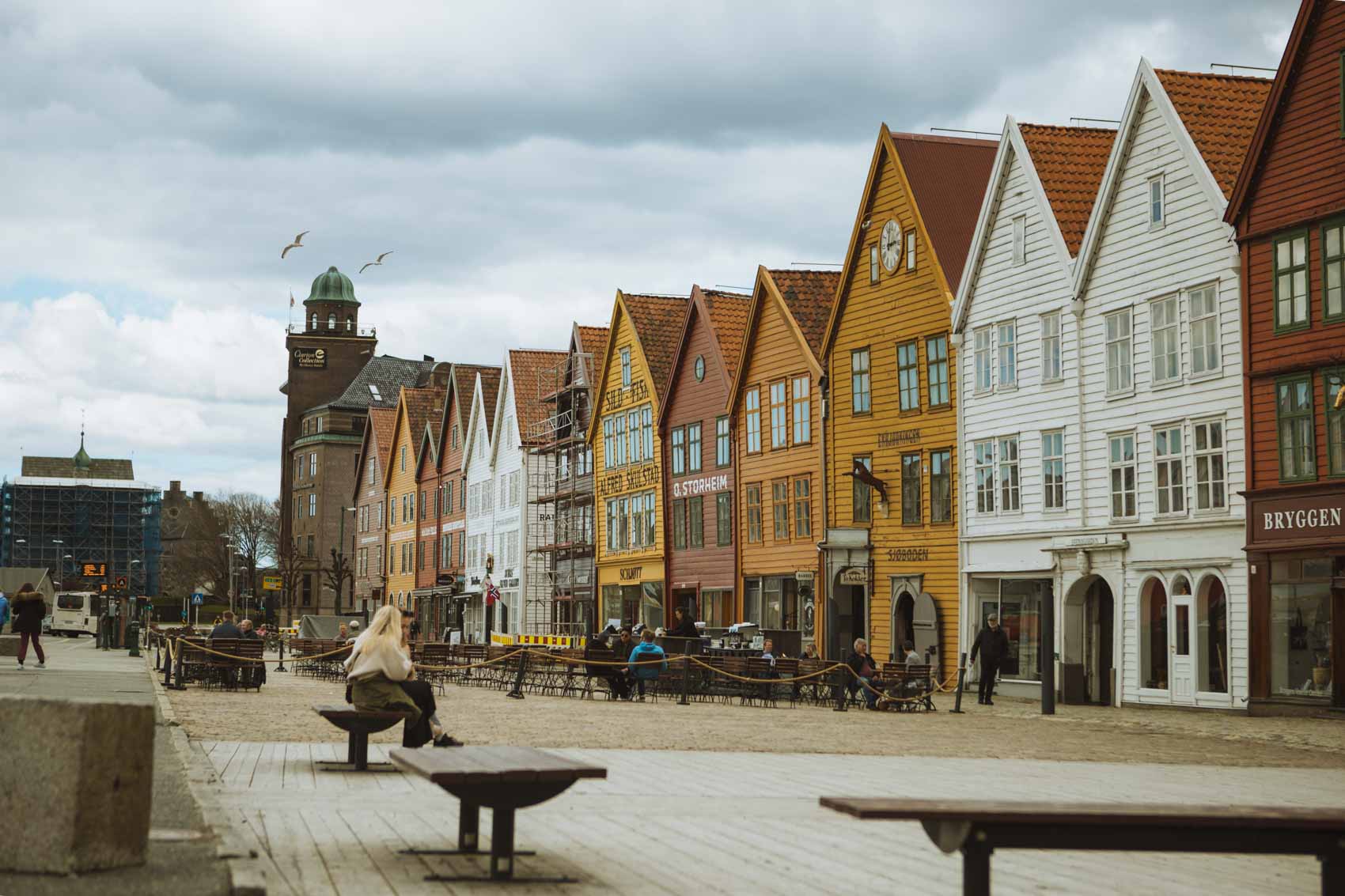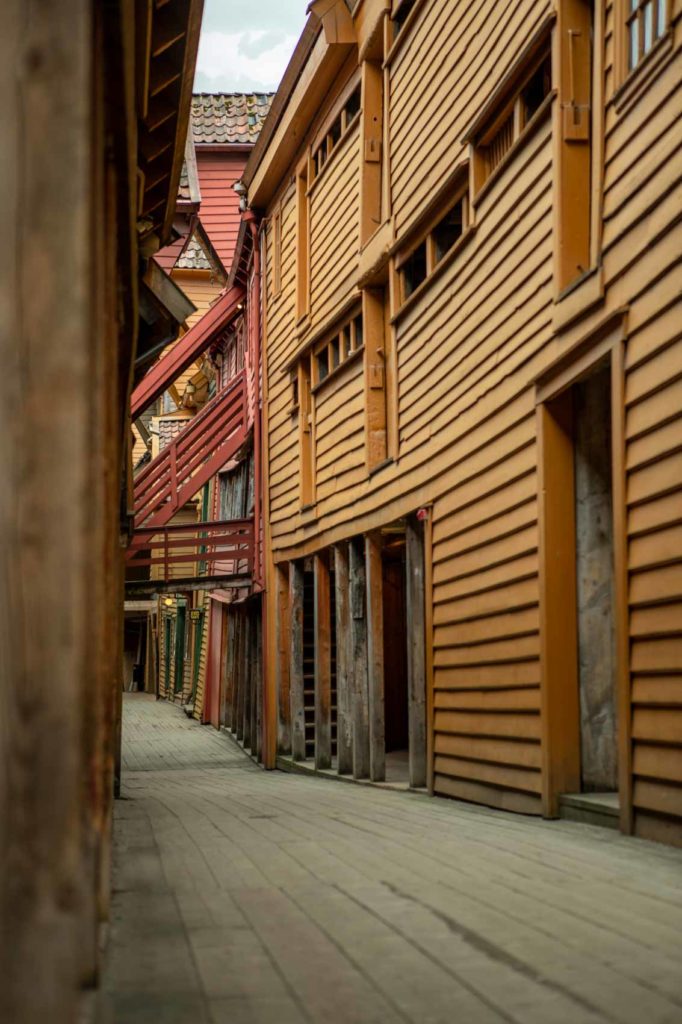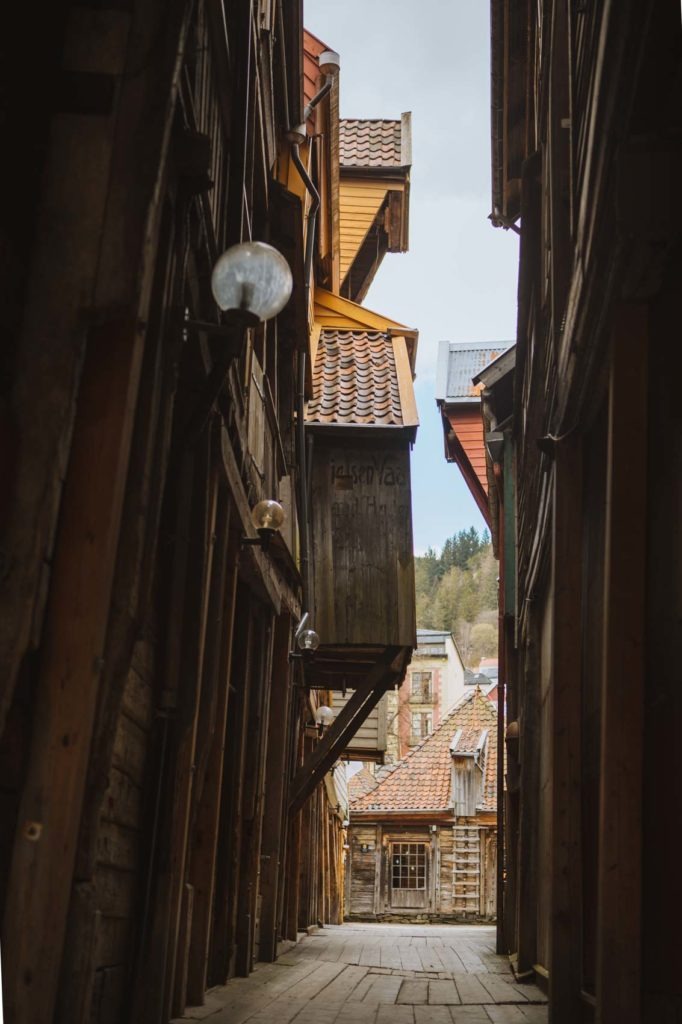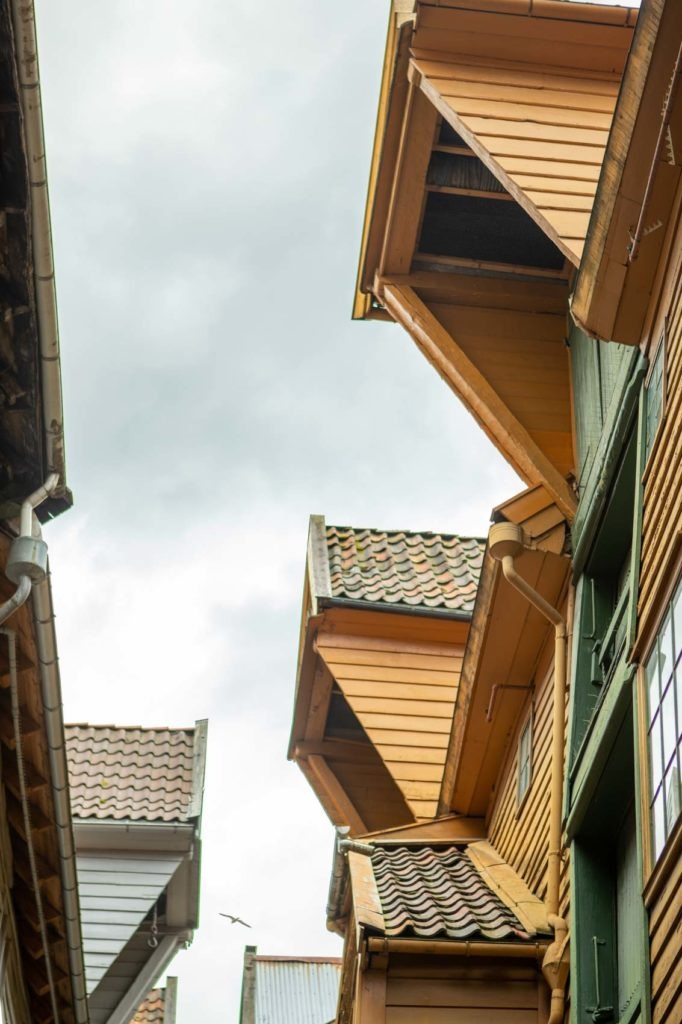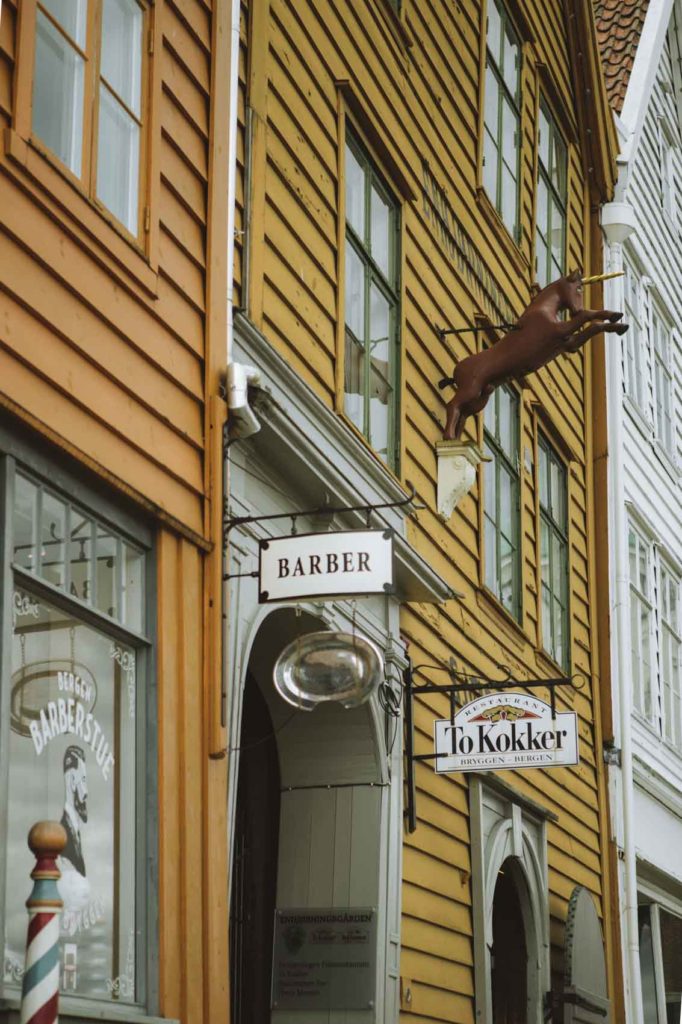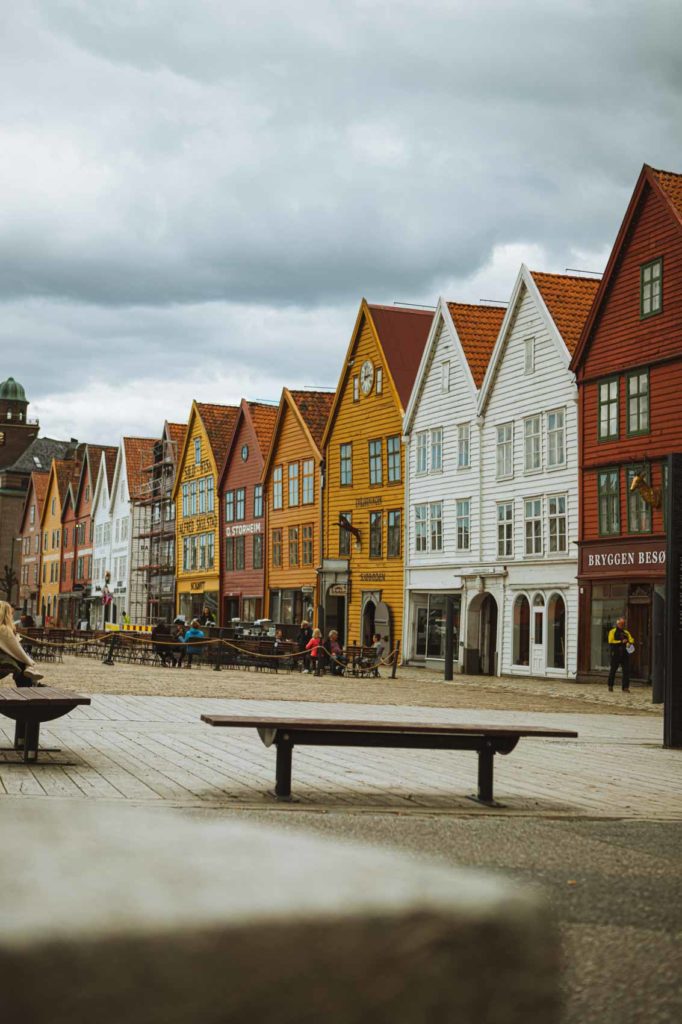Bearer of History
Established in 1070, Bryggen has been essential to Norwegian trade and culture for almost a millennium. For centuries the alleys and markets of Bryggen were thriving with trade, and there is an endless amount of stories from what happened inside the walls of Bryggen.
The German Influence
Located on the Norwegian west coast, Bergen has easy access to the North Sea, making trading with Europe a breeze, especially with the British and Germans. In 1350 the Hanseatic League, an organization of German merchant communities, founded the Hanseatic Office on Bryggen, resulting in an explosion in trade with the Germans. The Hanseatic merchants controlled the import of wheat from Germany and the export of stockfish to Europe, thus giving the Germans a key role in the operation of Bryggen. As a result of the German activity, Bryggen has been referred to as Tyskebryggen (the German dock), although the name isn’t commonly used nowadays.
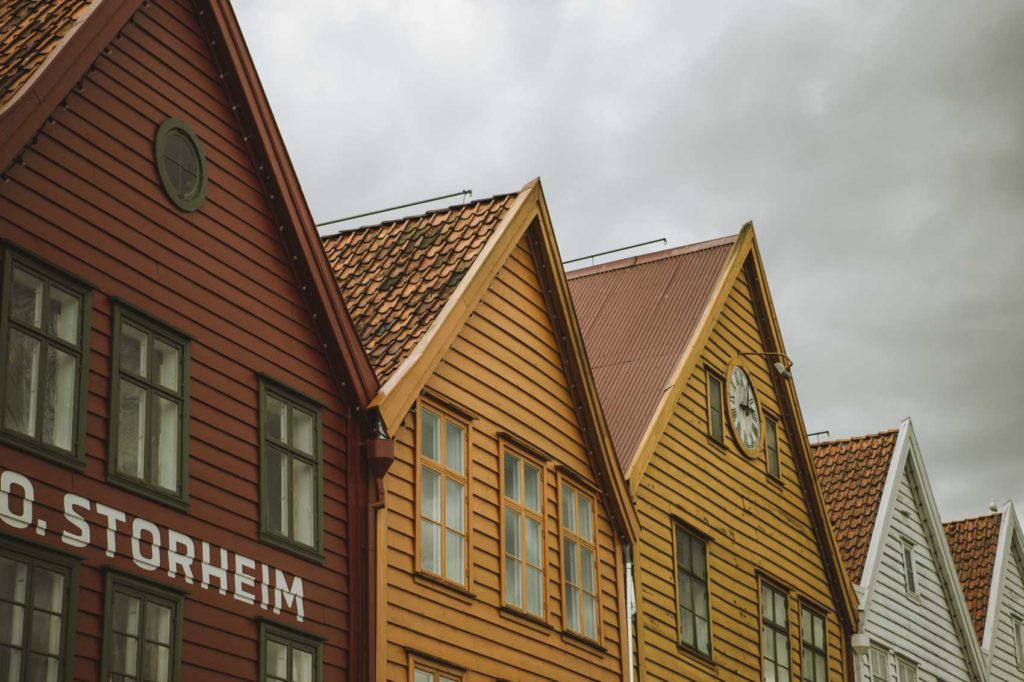
The Inferno of 1702
Throughout time Bryggen’s wooden construction has been an inconvenience, and Bryggen has experienced quite a lot of fires. On the 19th of May 1702, a fire started close to a nail factory in downtown Bergen. The fire grew quickly, and soon there was an inferno ravaging the city. For 13 hours the fire destroyed large parts of the city, and after a while the fire also spread to Bryggen, burning many important and historic buildings to the ground. The Hanseatic Office, the German merchant’s headquarters was completely destroyed, leading to a temporary halt in trade with Germans while the offices were rebuilt. During the fire, as much as 7/8 of the city’s inner core were heavily damaged or burnt to the ground. Bryggen, as we know it today, is the result of the reconstructions after the city fire of 1702, and the only construction dating before the fire is the stone cellars from the 14th century. After the last fire in 1955, it was finally installed a fire protection system, hopefully preventing the spread of fires in the future.
Thriving Fish Industry
For a long time, Bryggen ran most of Norway’s export of stockfish. Large batches of stockfish from Northern Norway were transported to Bergen, then exported to the European market by the Hanseatic traders. During spring almost every storage facility in Bryggen were loaded with huge amounts of northern Norwegian stockfish ready for Europe. Today, Bryggen is no longer the main Norwegian stockfish exporter, but fish is still a great part of Bryggen’s life and culture. Located right next to the Bergen Fish Market, Bryggen’s restaurants are delivered fresh fish straight from the Norwegian sea every day.
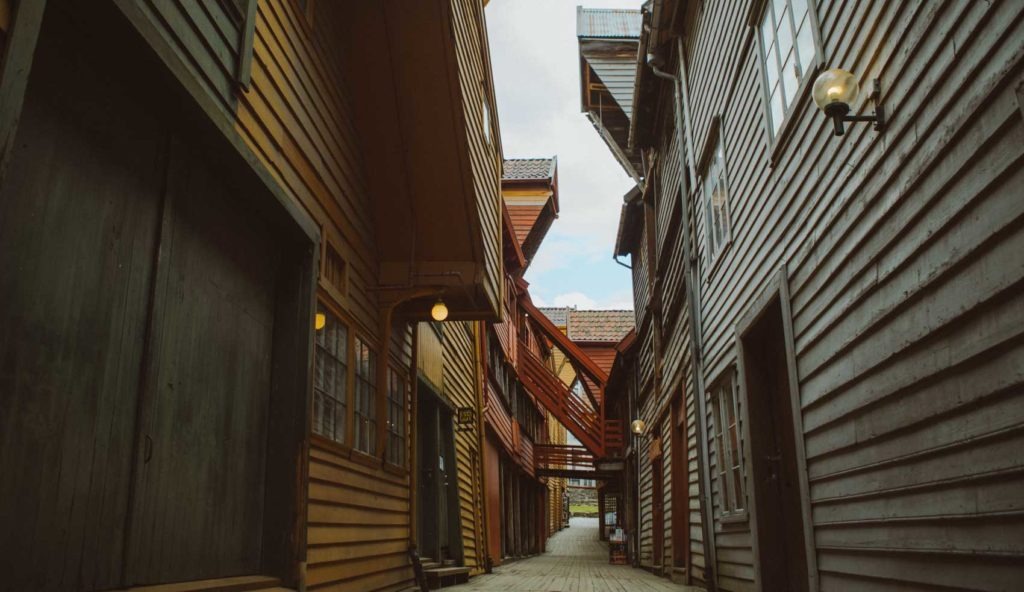
Architectural Heritage
Due to its key role in Norwegian and European trade, Bryggen was listed as a UNESCO World Heritage Site in 1979. It is regarded as one of mankind’s most precious cultural sites, alongside world-famous masterpieces like the Taj Mahal, The Vatican and the Statue of Liberty. Even though Bryggen is no longer the thriving trading hub it once was, the history alone is worth protecting.
“Bryggen bears the traces of social organization and illustrates the use of space in a quarter of Hanseatic merchants that dates back to the 14th century. It is a type of northern “fondaco”, unequalled in the world, where the structures have remained within the cityscape and perpetuate the memory of one of the oldest large trading ports of Northern Europe”
The United Nations Educational, Scientific and Cultural Organization (UNESCO)
Modern Handicrafts Central
Although times have changed and the thriving trade is gone, Bryggen still might be one of the top shopping destinations in Bergen. In the alleys of Bryggen, you find high-quality design shops housing freelancers and groups of designers focusing on Norwegian culture and design. The boutiques mainly sell handcrafted items like paintings, local foods and beverages, and clothing. Bryggen is also the home of Julehuset, a year-around Christmas shop, which we’ll cover in a later blog post.
Interested in Scandinavian culture and history? Here at Nuet, we publish weekly blog posts about everything Scandinavian. Read our other stories at nuetaquavit.kinsta.cloud/stories and follow our Instagram @nuetaquavit to get instant updates on new blog posts straight to your feed.
